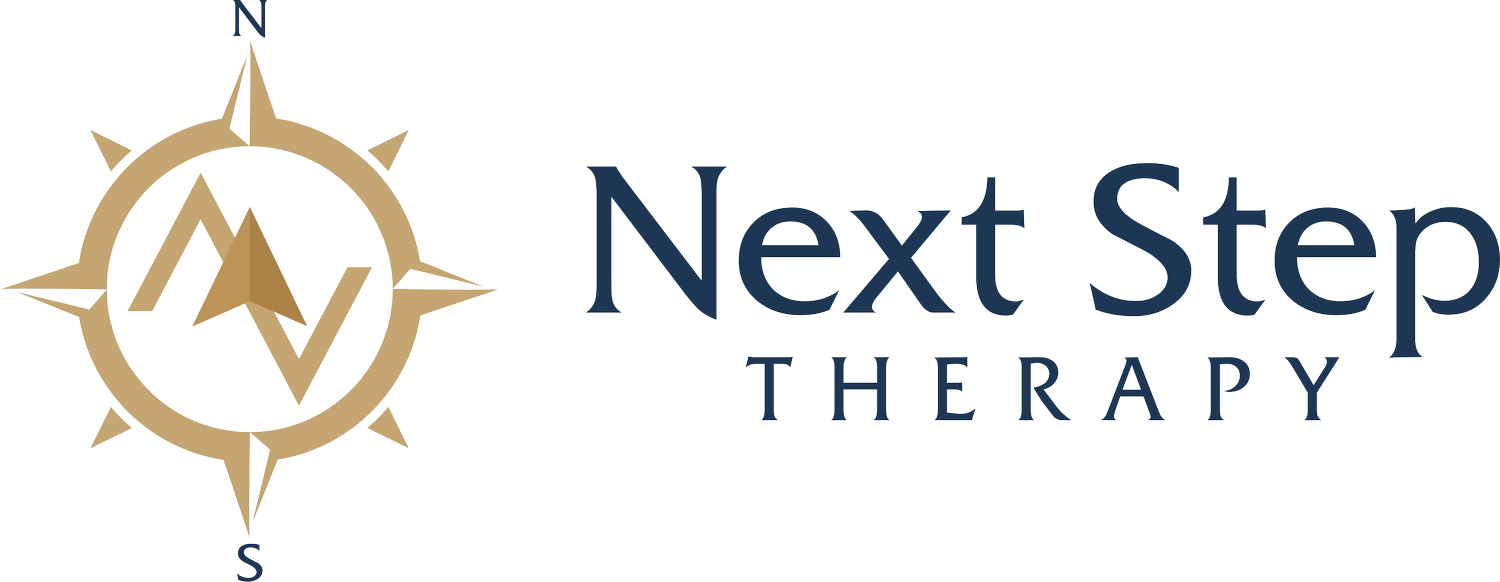Confronting Impostor Syndrome: How Depth-Oriented Therapy Transforms Professional Confidence
Confronting Impostor Syndrome: How Depth-Oriented Therapy Transforms Professional Confidence
Impostor syndrome makes high-achievers doubt their success and fear being “found out.” It’s more than a passing lack of confidence—it can quietly shape your decisions, leadership style, and overall career growth. Depth-oriented therapy digs into the root causes of these feelings and offers solutions that actually stick. Here’s a quick breakdown:
- What it feels like: Constant self-doubt, overworking to mask insecurities, dodging leadership roles, and brushing off real achievements.
- How it impacts you: Missed promotions, unnecessary stress, and reluctance to tackle new challenges.
- The solution: Depth-oriented therapy looks at the deeper patterns behind your self-doubt, helping you build genuine self-trust that lasts.
By spotting triggers, reframing negative thoughts, and aligning your professional identity with your core values, you can transform self-doubt into solid confidence. Therapy uses mindfulness, ACT, and performance psychology to help leaders gain clarity and balance in high-pressure environments.
Key takeaway: Impostor syndrome isn’t permanent. With the right approach, you can replace lingering self-doubt with real confidence and thrive in your career.
Overcoming Imposter Syndrome: Self-Doubt, Confidence, and Authenticity
Depth-Oriented Therapy Methods
Depth-oriented therapy takes a deeper dive into why impostor syndrome exists in the first place, rather than offering quick fixes for surface symptoms.
Core Principles and Approach
This therapy style uncovers the core psychological patterns that leave you feeling unworthy. Instead of just “managing” insecurity, it aims to understand how and why these patterns formed, then create meaningful change.
Key principles include:
- Identifying Patterns: Pinpoint recurring thoughts and behaviors that reinforce “I’m not enough.”
- Exploring Root Causes: Investigate the formative moments that shape how you view your professional abilities.
- Building Long-Term Confidence: Aim for true self-assurance through deeper understanding.
- Developing Authenticity: Line up your professional identity with personal values so you feel genuine in your role.
Treatment Methods and Tools
We use different therapeutic strategies to tackle impostor syndrome in a practical, lasting way:
| Therapeutic Approach | Purpose | Application |
|---|---|---|
| Psychodynamic Insights | Reveal deeper patterns | Uncover how past experiences shape your self-perception |
| Acceptance and Commitment Therapy (ACT) | Build mental flexibility | Align your day-to-day actions with personal values |
| Mindfulness Practices | Stay present | Lower anxiety and improve your ability to make decisions |
| Performance Psychology | Boost professional skills | Develop high-performance strategies that last |
Benefits for Professional Clients
High-performing professionals can’t afford constant self-doubt. This approach is customized to help you:
- Better Decision-Making: Feel clearer and more confident under pressure.
- Confident Leadership: Trust your own expertise and lead effectively.
- Consistent Performance: Excel without grinding yourself down.
- Balanced Wellbeing: Manage stress and blend work with personal life seamlessly.
“Next Step Therapy helps ambitious professionals transform work-related anxiety and stress into sustainable success. Our depth-oriented approach goes beyond quick fixes to address root causes, empowering you to excel professionally while maintaining wellbeing.”
– Next Step Therapy Toronto [1]
Virtual therapy sessions make it easier for busy leaders to keep progressing without wrecking their already demanding schedules.
Treatment Steps and Process
Depth-oriented therapy takes a structured yet flexible path to overcome impostor syndrome. Each phase builds on the previous one, gradually shifting how you view your capabilities and accomplishments.
Identifying Root Causes
We begin by exposing the triggers and deeper origins of your impostor feelings. During this step, you might:
- Log each time impostor feelings pop up, noting specific triggers.
- Explore personal and professional history to see recurring themes.
- Evaluate how these patterns guide your current decisions and leadership style.
Once you see the links, it’s easier to shift negative thought patterns.
Changing Negative Thought Patterns
After pinpointing core issues, therapy focuses on replacing limiting beliefs with more constructive ones. We use evidence-based techniques to spark real changes:
| Therapeutic Component | Purpose | Outcome |
|---|---|---|
| Pattern Recognition | Spot & challenge negative self-talk | Develop a healthier, more grounded self-view |
| Reframing Techniques | Replace limiting beliefs l flexibility | Adopt constructive thinking habits |
| Success Integration | Embrace real achievements | Build genuine self-confidence |
This sets the stage for building robust self-trust.
Building Strong Self-Trust
In the final phase, we focus on creating lasting confidence rooted in actual successes. Key steps involve:
- Recognizing your accomplishments so they truly sink in
- Relying less on external validation to feel “good enough”
- Using actionable strategies to handle challenges with growth in mind
Next Step Therapy supports this journey by offering regular sessions, personalized advice, and practical tools for high-achievers. That might look like:
- A custom roadmap matching your career goals
- Progress evaluations to adapt as you evolve
- Techniques for navigating pressure in real time
- Resources to help you sustain progress between sessions
This thorough approach doesn’t just banish impostor thoughts—it builds resilience and a stronger leadership style that endures.
Transform Challenges Into Growth
Discover evidence-based virtual therapy tailored to you. Overcome anxiety, optimize performance, and achieve personal growth with expert guidance.
Improving Professional Self-Image
Once you’ve laid the groundwork for self-trust, it’s time to reshape how you see yourself professionally. A clear, honest self-image ties your actual skills and growth to how you perceive yourself, often boosted by deeper self-reflection or therapy.
Moving Past External Validation
Leaning heavily on external approval can feed impostor syndrome. Instead, focus on personal success benchmarks that mirror your genuine development. For instance:
| Internal vs External Success Metrics |
|---|
| Internal |
| - Tracking your skill growth |
| - Looking at problem-solving improvements |
| - Checking if decisions align with your values |
| - Balancing career demands with personal wellbeing |
| - Feeling a sense of purpose beyond just titles or raises |
Shifting focus to internal metrics helps you remain confident, even when outside recognition ebbs and flows.
- List your specific skills and wins.
- Base decisions on what matches your deeper values.
- Track progress toward goals that matter to you.
Strengthening Leadership Skills
To grow as a leader, identify and leverage your strengths. Boost your confidence and influence by:
- Stepping up to lead high-stakes initiatives
- Mentoring newer professionals
- Contributing to strategic decisions
- Sharing expertise at industry events
Next Step Therapy focuses on weaving these real accomplishments into your professional identity. That way, your leadership style reflects genuine skill, not frantic overcompensation or burnout.
Maintaining Long-Term Results
Keeping progress after therapy means setting up the right support systems. Here are some ways to ensure you keep moving forward:
Building Professional Networks
Invest in a solid network of colleagues and mentors. Consider:
- Peer Support Groups: Join or start a group to share experiences and stay accountable.
- Mentorship Relationships: Find or become a mentor to exchange insights.
- Industry Communities: Get involved in specialized forums or associations in your field.
Depth matters more than breadth—focus on meaningful relationships.
Self-Monitoring Techniques
Regular check-ins keep impostor feelings from creeping back in:
- Weekly Journal: Log achievements, stressors, and new ideas.
- Monthly Self-Assessment: Reflect on personal and professional growth.
- Quarterly Review: Revisit leadership efforts, skill-building, and major outcomes.
Use these reflections to guide your future goals.
Next Steps After Therapy
Transitioning to a self-sustaining routine works best when you have a plan:
- Schedule occasional follow-ups or “booster” sessions
- Practice stress-management tools you’ve learned
- Stay connected with your professional network
- Keep a record of your wins and evolving skill set
These measures help you grow both confidence and leadership style as your career evolves.
Conclusion: From Self-Doubt to Self-Trust
Busy professionals can drastically change their relationship with impostor syndrome by engaging in therapy that fosters real, lasting confidence. This isn’t about a quick motivational boost—it’s a deep dive to maintain your high standards while feeling secure in your abilities.
The move from self-doubt to self-trust takes commitment and expert guidance. Depth-oriented therapy helps you develop confidence that endures, without lowering your ambitions or performance.
Key changes often include:
- Refining a more resilient professional identity
- Turning self-doubt into motivation for personal growth
- Establishing leadership practices built to last
These elements let you redefine who you are at work. The goal isn’t to erase every doubt but to channel it into constructive growth—recognizing your real strengths. With therapy, you learn to manage impostor syndrome and embrace your capabilities.
The next step is applying these lessons to everyday leadership. By blending therapy-driven insights with practical strategies, you can make lasting changes—guiding teams, handling crucial decisions, and thriving under pressure while staying true to yourself.
Depth-oriented therapy offers a foundation to transform self-doubt into confidence, ensuring your professional journey moves from “I hope they don’t find me out” to “I know what I bring to the table.”











